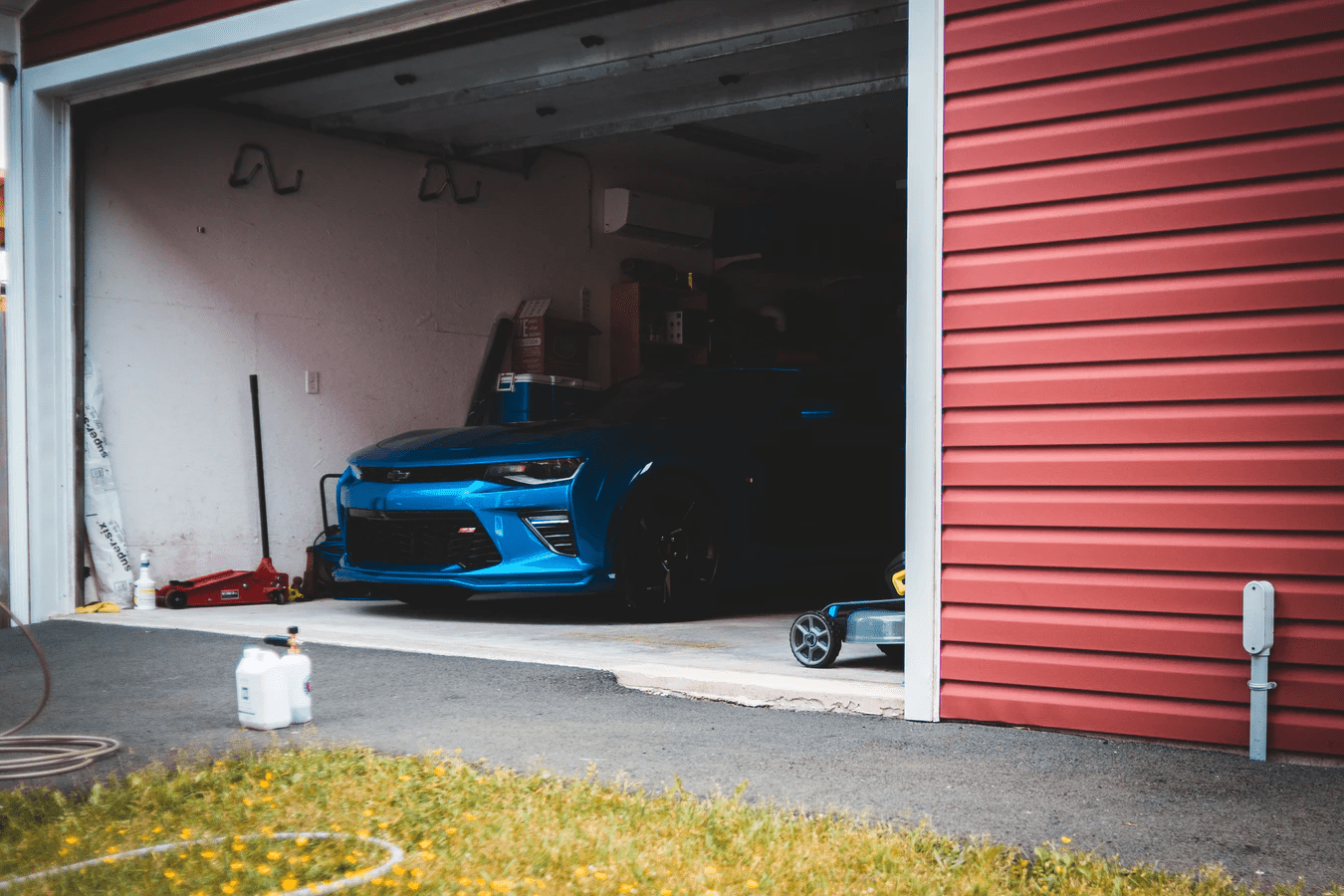Whether you are storing your car for the winter or you plan to leave your car sitting for months, making sure you have prepared your vehicle for storage is very important. Leaving your car with no preparation can leave you with a huge headache when you come back to hit the road. Following these steps will ensure you come back to a happy and healthy vehicle until it is time to put it back in storage.
1. Picking a Storage Location
Choose a secure and moisture-free place to store your vehicle. This can include a home garage to a climate-controlled storage facility. Ideally, find something indoors and away from the elements. The storage location doesn’t need to be climate controlled or have tiled floors, but storing your car in an old barn is not ideal.
2. Wash Before You Store
Give your vehicle a good cleaning before letting it sit for any period. Detailing the interior and exterior of the vehicle will ensure you come back to a fresh vehicle ready to be enjoyed. Whatever you do, DO NOT leave any food in the vehicle as this will attract rodents.

Photo Credit: Unsplash – Tuomas Nylund
3. Check the Engine Oil
Check your vehicle’s dipstick or OBC (on-board computer) to ensure your vehicle is not overdue for an oil change. If your oil is dirty or due for an oil change, you can do this before storage.
Modern conventional and synthetic oils are stable in a vehicle for a year or longer depending on storage conditions. As temperature fluctuation will contribute to condensation and oxidation of engine oils. “Fogging” is not necessary unless storing for more than a year.
4. Top Up the Fluids
Ensure you have checked and topped up all fluid levels such as; antifreeze, brake fluid, engine oil, and fuel. Once you have filled up on fuel, it is very important to add a fuel stabilizer. Per this article from TireKickers, gasoline will only last from 3 to 6 months in storage.
Once you add a fuel stabilizer, let your vehicle run for about 5 minutes. This will prevent your fuel from going bad and can make it last up to a year.
5. Pump Up Your Tires
Once you are in your storage facility with your clean vehicle, inflate your tires to the max PSI rating (shown on the tire’s sidewall). You can do this using a portable air compressor with a tire gauge. Doing this will prevent flat spots from developing on the tires. You do not need to put your vehicle on jack stands while stored as this is harmful to your vehicle’s suspension components.
Once you are finished with the above steps, you can leave your vehicle in “park” or neutral with the handbrake or parking off. If needed, put wheel chocks or blocks to prevent your vehicle from moving.
6. Roll Your Windows Down
Let your vehicle breathe by leaving the windows down about an inch to prevent moisture and allow airflow into the vehicle. Otherwise, you may come back to a musty smelling car.
7. Keep Your Battery Charged
You have a couple of options here. You can either remove your battery and store it indoors while hooked up to a battery tender. Or you can leave the battery in the vehicle (as some vehicles require) and hook up your battery tender. Battery tenders maintain a battery’s voltage without overcharging and causing damage.
8. Use These Pest Prevention Tips
Vehicles are a perfect spot for rodents to set up their home. When they do, they cause havoc by chewing your vehicle’s wiring. So you must keep them away by placing some steel wool in the tailpipe/s, tossing dryer sheets in the interior (don’t forget the trunk), and placing mothballs outside of your vehicle.
9. Cover Up Your Car
Use a high-quality car cover that will protect it from dust and other contaminants. Also, consider a cover that allows the vehicle to “breathe” vs using a tarp to cover your vehicle.
It is also common practice to use a tarp or plastic sheet to create a moisture barrier to park your vehicle on. Doing this prevents moisture from rising onto your vehicle.

Photo Credit: Unsplash – Frederik Højfeldt Nielsen
10. After You Have Stored Your Vehicle
Leave it alone! It’s a common misconception that you should start your vehicle every few weeks to lubricate your vehicle’s engine. Doing this does not allow your vehicle to warm fully and therefore creates condensation in your engine, which is harmful. Even if you’re able to sneak out for a drive then place your vehicle back in storage, don’t. If you do, you’re undoing the work you put into preparing your vehicle for storage. After following these ten steps, you are now finished and now know what it takes to properly store your vehicle!









